By Joyce Morgan
Lin Utzon was a 17-year-old art student when Martin Sharp, the notorious young cartoonist of the satirical magazine Oz, arrived at a noisy Paddington party. She found him intelligent, charming and roguish.
She knew Martin and the magazine's editors Richard Neville and Richard Walsh had just been at the centre of a landmark obscenity court case that pitted the three young upstarts against the suffocating conservatism of Australia in 1964.
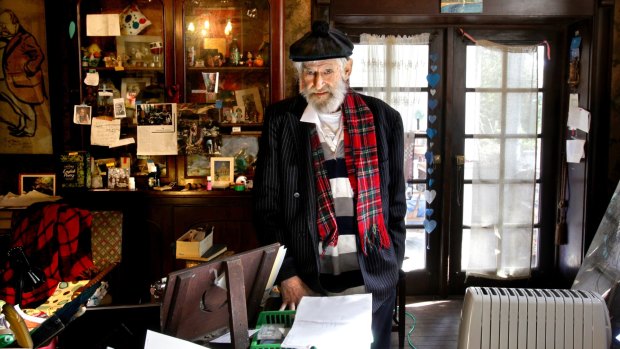
Artist Martin Sharp in his studio in 2012.Credit: Steven Siewert
In the early days of their life-long friendship, Martin visited Palm Beach, where Lin's parents lived, they went to parties together and she assisted him on an artwork for an exhibition.
"Martin was like a flame of intelligence. He was so illuminated in a way, so different from everybody else. All his thoughts and ideas were so incredibly original and different," says Lin.
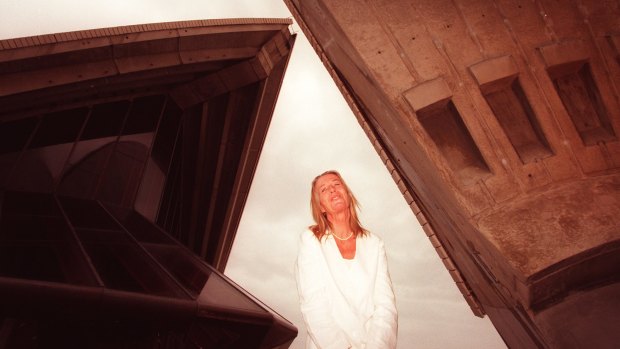
Lin Utzon at the Sydney Opera House in 1998.Credit: Peter Rae
And Lin visited his house in Cranbrook Lane, Bellevue Hill, where he lived with his mother, Jo Sharp. The house was invariably full of Martin's friends, and Jo welcomed their presence. Jo Sharp hosted high-society parties at her home, but it was the company of young people she particularly enjoyed. "She was very supportive of [Martin], and accepted all of us, his friends, to come and go at all hours of the day," says Lin.
EACH time he drove from Cranbrook Lane to the city in the mid-1960s, Martin could see the arched ribs of the Sydney Opera House taking shape on Bennelong Point. It was the realisation of a seemingly impossible dream. It was a dream of a more creative future, of a nation that could aspire to more than sporting prowess and booming steel production. At a time of cultural cringe, it signalled a shift in values: that artists had a place and were valued.
Some scoffed at the grand dream, and resented money being spent on it – even if it was funded by a lottery. Martin poked fun at the naysayers in a cartoon that depicted a woman wearing a large hat resembling the Opera House and captioned: 'You wouldn't catch me buying a lottery ticket to build that monstrosity. It's a waste of money if you ask me.'
Danish architect Joern Utzon had arrived to a hero's welcome when he moved his family to Sydney in March 1963 after winning an international competition to design the building. But soon a political storm would knock the wind from the Opera House's sails with the election of Robert Askin and his Liberal-Country Party coalition government in May 1965. Askin had made the Opera House an election issue amid allegations of delays and cost blowouts; he vowed to rein these in. To do so, he appointed Davis Hughes as Minister for Public Works.
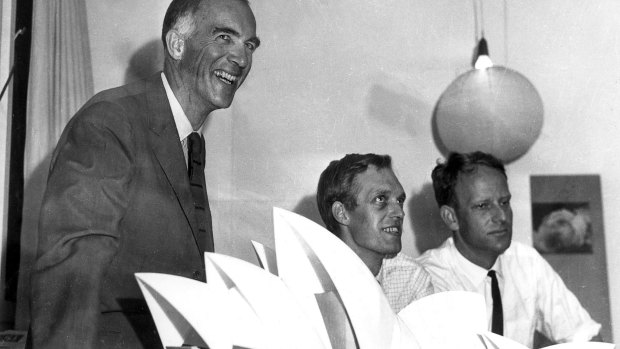
Opera House architect Jorn Utzon, pictured in 1966, said: “One of the great features of the Opera House is ... the fluidity of people’s movements through the house, and once you clutter this you have a problem."Credit: Geoffrey Bull
Hughes starved Utzon of funds and forced a showdown. Utzon met Hughes in his office in February 1966 and warned that, without the money, he would be forced to quit. Hughes called a press conference and announced that Utzon had resigned. The job would be completed without him, by a committee of architects.
Author Patrick White and architect Harry Seidler led a demonstration of 3000 architects and students. They marched from the Opera House to State Parliament and demanded Utzon's reinstatement.
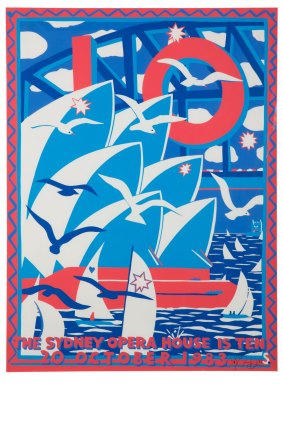
Martin Sharp's artwork for the Opera House's 10th anniversary.
Martin ridiculed Hughes and his myrmidons in a series of cartoons for March Oz. In one, the minister rails against Utzon: "Brilliant move forcing that Danish prima donna to resign, he'd want to sing his own bloody operas if we'd let him stay ... We have some of the world's greatest architects right here in Australia ... I've even drawn up a few plans meself." Martin's cover depicted Boofhead — the dull-witted cartoon character who would reappear in his art — insisting: "But I don't give a stuff about Opera!"
The lobbying for Utzon's reinstatement continued. But to no avail. Utzon made plans to leave Australia. Utzon, his wife and their three children secretly made their way to Sydney airport. They were the last passengers to board a flight bound for San Francisco on April 28, 1966. Lin was 19 and distraught at the prospect of leaving the city and friends she loved.
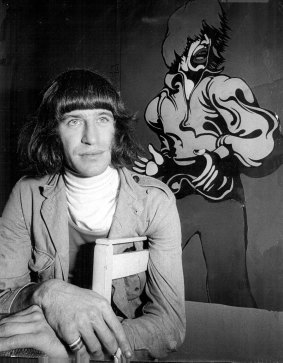
Martin Sharp, pictured with one of his works, in 1970.Credit: Rick Stevens
The timing of their departure caught the government off guard. No one – neither Utzon's staff nor Harry Seidler, who had tirelessly advocated for Utzon – knew Utzon was about to leave Australia. Only two people close to the Utzon family knew of their imminent departure: Martin and Jo Sharp. The well-connected Jo arranged to get the family onto the plane and evade the press. Lin recalls: "Martin's mother organised our departure. They were, in fact, the only ones who knew we were leaving. She organised with Qantas that we could get onto the tarmac to the plane ... My father was hounded by the press at the time. And it was terribly emotional for me to leave my friend Martin, my friends, everyone."
For Martin, the treatment of Utzon was the final straw. The March issue of Oz, with Martin's Opera House cartoons, was his last as the magazine's art director. He was poised to go overseas, prompted in large part by the continued harassment of Utzon.
Utzon's bold dream had turned into a nightmare. It had become a symbol of all that was wrong with Australia – narrow, provincial, without vision. England had never looked so appealing. And London was said to be swinging.
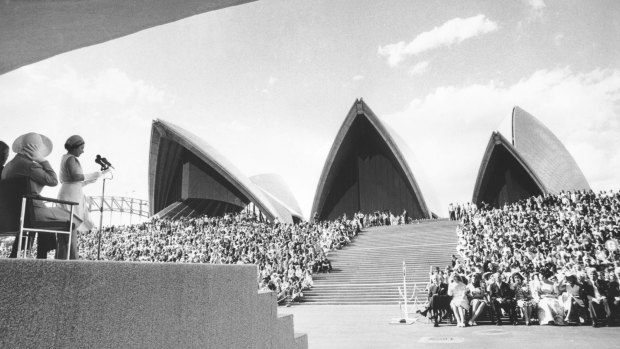
Queen Elizabeth II officially opens the Sydney Opera House in 1973
WHENEVER Lin Utzon visited Sydney as the years passed, she and Martin would drive around the harbour. And when the Sydney Opera House came into view, he would exclaim: "Look at that! Look at that!" Martin had always loved the Opera House. Over the years, he incorporated it into his art.
Martin was hardly alone in his admiration for Joern Utzon's masterpiece. Australia had taken the building to its heart in the decades since the architect and his family had quietly left Sydney.
But the Opera House had cast a long shadow over the life of Joern Utzon and his family. For years, whenever Lin stayed at Martin's Bellevue Hill home Wirian on her Sydney visits she did not want to discuss it, or entertain the possibility of a happier ending. But Martin did. He told Lin that people loved the magnificent building and that it had changed Australia forever. And he told her: "It's your history too; you can't escape it."
Many thought a rapprochement was long overdue with Joern Utzon, whose name was not even mentioned when the Queen opened the Opera House in 1973. Keen to see some tangible recognition of the architect, New South Wales arts minister Peter Collins contacted Lin Utzon. Martin accompanied her in 1993 when she unveiled a bronze plaque that showed Joern Utzon's spherical solution to his architectural puzzle.
Martin was thrilled and threw a party at Wirian to celebrate in March 1994. The guests included Opera House advocates, politicians and Lin Utzon. Martin again accompanied Lin when she presented her father's scale model of the main hall to the Sydney Opera House Trust, its governing body, in 1995.
But the building was then approaching its 25th anniversary and there was no clear plan as to how to move beyond symbolic gestures to achieve a reconciliation with Joern Utzon. According to Joe Skrzynski, who was appointed chair of the Trust in 1996, there was an assumption that to do so would mean closing the Sydney Opera House, getting Utzon's original plans for the interior, demolishing everything that wasn't according to his design, and rebuilding. Skrzynski recalls: "That was obviously politically a very difficult idea so that had slowed down a lot of peoples' thinking."
Time was pressing. Beyond the landmark anniversary, the building would soon need substantial internal work, and Utzon was no longer a young man. "You couldn't in all honesty be thinking about those major works while he was alive and ignore him," says Skrzynski.
Soon after his appointment, Skrzynski held a private dinner in the Opera House boardroom with several key figures including architect Alex Popov – Martin's friend and Lin Utzon's former husband. Popov made a comment during the dinner that helped overcome the stalemate. Popov said that going back to the original plans was a dead end. No architect would want to simply dust off their decades-old plans and effectively say, "Here they are, go build it." He would want to consider them afresh and look forward.
The dinner was a breakthrough. The idea took shape of engaging Utzon to set down his big-picture thinking for the future of the Opera House. But a key question remained: how to approach Joern Utzon after his inglorious exit from Australia so long ago?
JOE SKRZYNSKI was in his office when he received a phone call from Martin. The pair had crossed paths from time to time since their student days, but the call came unexpectedly. Martin had some news that made Skrzynski's ears prick up. Lin Utzon was in Sydney and staying at Wirian. Would he like to come over?
Skrzynski walked down the gravel drive at Wirian in January 1998. He sat at the wooden kitchen table with Lin and Martin. As they talked, Skrzynski assured Lin that the Opera House Trust was sincere in wanting to have Joern Utzon back. Skrzynski recalls: "Martin's involvement was crucial to create the link as a trusted friend to introduce me to Lin and for Lin to feel confident about the discussion." Skrzynski outlined the possible way forward.
It was a "marvellous conversation", says Lin. She agreed to talk to her father on her return to Europe. And when she did, not only was he open to the idea, but she saw a change in his spirit: "He was an old man, so he did not have a real ambition nor illusion that it would have been possible to go back and change the whole inside. He was very light hearted after that."
Skrzynski and Sydney architect Richard Johnson flew to Denmark to meet Utzon. In collaboration with his architect son Jan Utzon and Johnson, Joern Utzon developed a set of design principles to guide the building's future. He also redesigned the Opera House's reception hall, to be renamed the Utzon Room, and designed a large tapestry to hang within it.
Lin oversaw the tapestry's installation, and Martin was with her for its unveiling. Indeed he accompanied her to every milestone involving the architect and the Opera House.
In the wake of the reconciliation, the world appeared to rediscover Joern Utzon. He was awarded architecture's top honour, the Pritzker Prize, in 2003. Although he never saw his completed masterpiece, when Utzon died in 2008 his building was hailed by British architecture critic Deyan Sudjic as having "transformed the world's view not just of Sydney, but of Australia". Lin regards the meeting around Wirian's kitchen table as pivotal: "That first meeting with me and Joe Skrzynski and Martin ... was when everything started cooking."
This is an edited extract from Martin Sharp: His Life and Times, by Joyce Morgan, published on January 24 by Allen & Unwin (RRP $34.99).
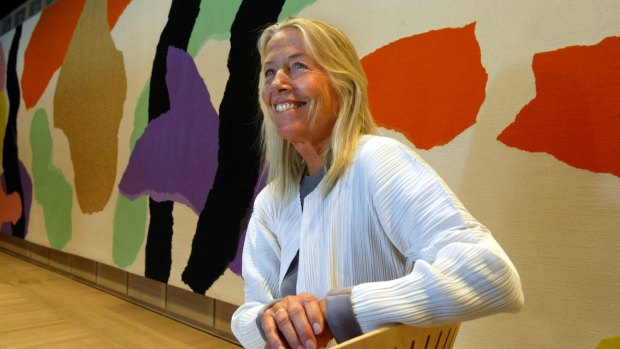
Lin Utzon, daughter of Joern Utzon, with the tapestry designed by her father at its unveiling at the Sydney Opera House in 2004.Credit: Robert Pearce